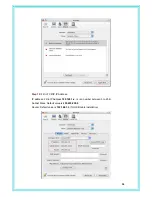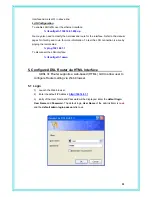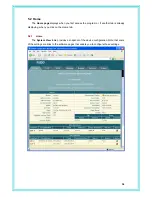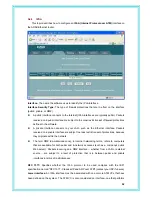
43
that corresponds to this MAC address. If you type a MAC address here, you must have
specified the same IP address in both the Start IP Address and End IP Address fields.
z
Net Mask:
Specifies which portion of each IP addresses in this range refers to the
network and which portion refers to the host (computer). You can use the net mask to
distinguish which pool of addresses should be distributed to a particular subset of
computers on your LAN (call a subnet).
z
Domain Name:
A user-friendly name that refers to the subnet that includes the
addresses in this pool.
z
Gateway Address:
The address of the default gateway for computers that receive IP
addresses from this pool. If no value is specified, then the appropriate LAN (eth-0) or
USB (usb-0) port address on the device will be distributed to each PC as its gateway
address, depending on how each is connected. See Configuring IP Routes for an
explanation of gateway addresses.
z
DNS/SDNS:
The IP address of the Domain Name System server to be used by
computers that receive IP addresses from this pool. The DNS translates common
Internet names that you type into your web browser into their equivalent numeric IP
addresses. Typically, this server is located with your ISP.
z
SMTP...SWINS (optional):
The IP addresses of devices that perform various services for
computers that receive IP addresses from this pool (such as the SMTP, or Simple Mail
Transfer Protocol, server which handles e-mail traffic). Contact your ISP for these
addresses.
4.
When you are done defining the pool, click
Submit
.
A confirmation page displays briefly to indicate that the pool has been added successfully.
After a few seconds, the DHCP Server Pool – Add page displays with the newly added pool.
5. Click
DHCP Mode
in the task bar, then follow the instructions in Setting the DHCP Mode to
enable the DHCP server.
5.3.4 DHCP
Relay
Some ISPs perform the DHCP server function for their customers' home/small office
networks. In this case, you can configure the device as a
DHCP relay
agent. When a
computer on your network requests Internet access, the ADSL/Ethernet router connects your
ISP to obtain an IP address and other information, and then forwards that information to the
computer.
















































